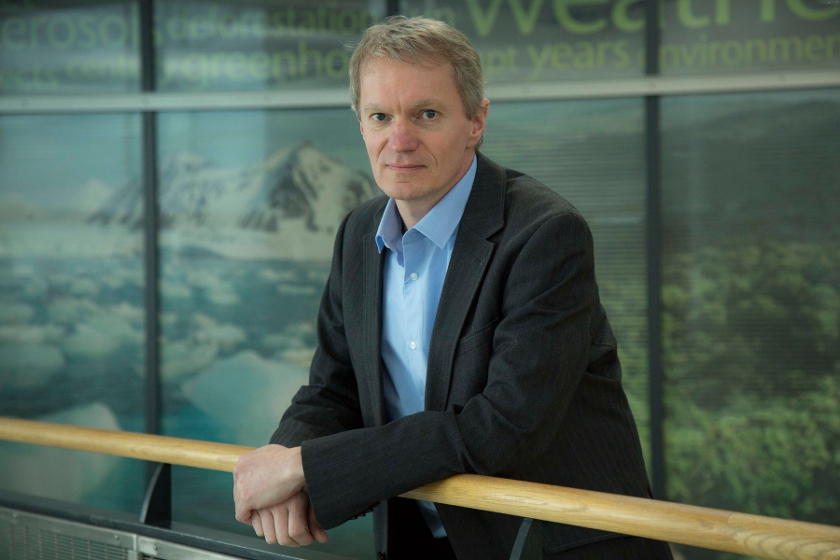Spotlight on the Head of the Met Office Hadley Centre
Introducing Professor Albert Klein-Tank, the new Head of the Met Office Hadley Centre.
Welcome to the Met Office, how are you finding things so far?
Everyone has been very helpful throughout science, management and every area I have met.
What are your initial impressions?
After working for 25 years at KNMI (the Dutch meteorological service) in climate science, it is a change to be here. The Met Office is a bigger organisation than KNMI but the two organisations are similar because of the pull-through of science to operations. That is different from academia and universities generally, and it is great to manage a team with that one goal.

So why did you choose to come to the Met Office?
It is a great opportunity and, in many ways, it is a dream come true. I have admired the Met Office Hadley Centre for a long time. It is world-renowned, and it is world-class. I have used Met Office observations data since the early days of my climate research career. Also I have collaborated with the Met Office many times on modelling and on developing methodologies for national climate projections working in European projects. I have also admired many people who have worked at the Met Office who were instrumental in developing the climate models that we still use today.
What attributes do you bring with you?
A management style that is informal, and not too concerned about hierarchy. I want to take ideas and feedback from all layers of the organisation. I feel that weather and climate are not so different – the way that people experience climate change is often through more (or less) extreme weather. So, I want to help weather and climate science integrate by being open, sharing information and knowledge.
What are your priorities?
I have arrived at a very busy time. There are several new developments to support and direct including the new Hadley Centre Climate Programme that launches soon and sets out our goals for the next three years. We also are concentrating on delivering the Weather and Climate Science for Service Partnership Programme (WCSSP) supported by the UK government's Newton Fund. Work in support of the next Intergovernmental Panel on Climate Change (IPCC) assessment report has started. Later this year the new UK Climate Projections will be published, but it is important to remember that the work does not end there. Publication is just the beginning and there will be many questions about the projections – how to interpret the details as we move from fundamental to more applied research, answering specific questions from different sectors.
What is your long-term vision for the Met Office Hadley Centre?
Our science will transform into open science , in which value is created jointly with partners and sharing of information is rewarded. There is so much to do we must work with others. Partnerships such as the Met Office Academic Partnership are very important, and I would like to build even more, carefully selected, collaborations worldwide. The way we do science and model development will be very different in five years’ time. With recent improvements, it is easy to think that the job is done, but it is not done. We need to improve models for basic prediction and make the best use of new technology and the possibilities of high-performance computing. We need to be ready to use new technology and large data volumes. New technology always comes quicker than we think so we need to prepare.
What are the potential risks and opportunities for the Met Office?
An internal orientation is important but is also a risk – it is better to look externally, at society, responding to its needs and leading the Government’s requirements. Science collaborations are a good opportunity. Climate services is another and under exploited area and we should further integrate and combine with the Met Office’s already strong weather services. Making use of existing weather services expertise can give us a head start.
How important is it to turn science into services?
We need to provide society, especially vulnerable sectors and people, with the best available information to help them make decisions. Our purpose – working at the forefront of weather and climate science for protection, prosperity, and well-being – can be quite abstract. Of course, no one disagrees with our purpose, but how can we make it more real, more concrete? By making sure that our science is turned into something useful.
Is there anything else you would like to add?
I’m passionate about weather and climate science. I really couldn’t be a manager anywhere else, like a software company, for example. Community and collaboration are important to me. I still have professional links to the Netherlands, as I am a Professor at Wageningen University working with PhD students. An influx of young scientists is important, both as new members of the science community and in terms of the new ideas that they bring. It can sometimes be difficult but is always essential to work with young people in universities, remembering that you don’t have be Met Office staff to be able to contribute to our goals.





